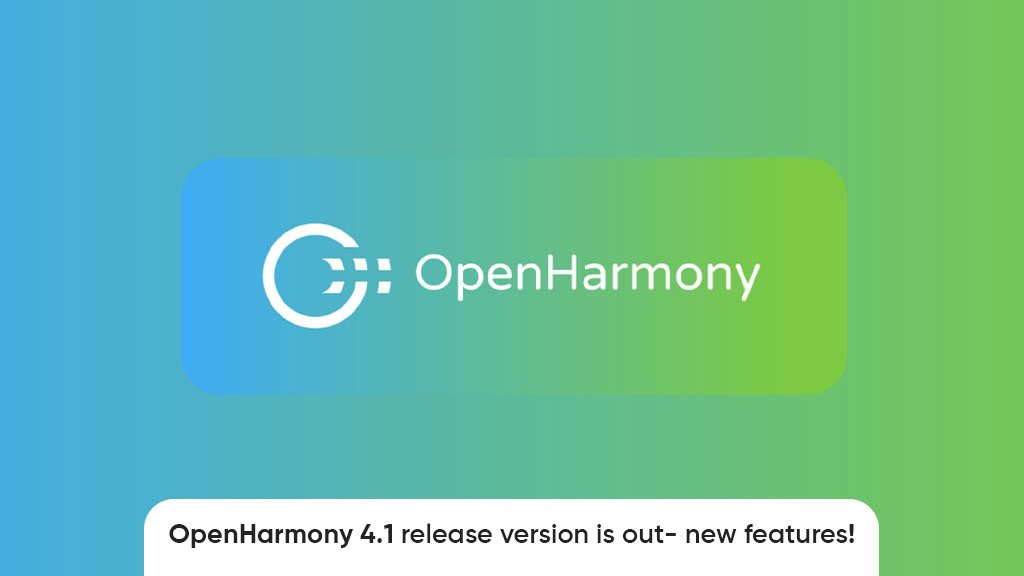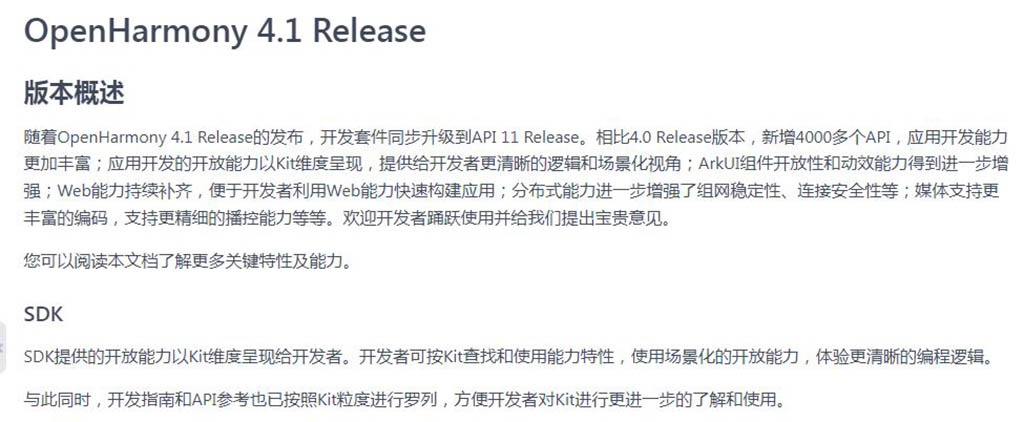OpenHarmony
OpenHarmony 4.1 release version is out with new features and improvements

OpenHarmony 4.1 operating system release version has come into existence with a bundle of new features and enhancements. The latest build is rolling out with over 4000 APIs and improved capabilities for ArkUI components, network stability, and more.
OpenAtom Foundation is bringing the new OpenHarmony 4.1 release version after making several amendments. Major changes are visible in the app development kit which enables developers to get clearer logic and scenario-based views.
Further inputs show refinements for network stability, connection security, richer encodings for media, and optimized broadcast control capabilities. Developers can quickly develop apps using enhanced Web capabilities with enriched tools.
Some other sections that have been revamped under this new version count Window, Media, Camera, communication, location, safety, power supply, USB, application framework, upgrade, Web, and more. You can check the main points below.

OpenHarmony 4.1 features and changelog (Image Credits: Gitee)
OpenHarmony 4.1 Release: Changelog
ArkUI
- Support custom component expansion requirements:
The framework provides Modifiers for basic components. Developers can inherit and implement custom Modifiers, and then use Modifiers to implement chain calls and parameter transfers. Modifiers are used together with custom components to solve the problem of parameter passing in custom components. The Modifier mechanism supports single-point attribute updates.
- Canvas supports GraphicContext to improve self-drawing capabilities and performance.
- Text class controls support attributed strings
- Controls have access to AI enhancement capabilities, including Image, Video, XCopmonent, and Canvas controls that support entity recognition; text content information recognition supports extraction of time (schedule) and geographical location.
Status management capability optimization:
- While the new interface retains the basic functions of the current interface, there is no need to call aboutToBeDeleted for deregistration, and it will not cause memory leaks
- @StorageLink, @StorageProp, @LocalStorageLink, @LocalStorageProp support undefined, null and union types
- The private ordinary variable or state variable processing strategy is enhanced
- Supports in-depth observation and can observe attributes in classes.
Enhanced pop-up component customization capabilities:
- By calling the interface provided by promptAction, it supports customized display/exit animation
- Configure pop-up box style: set background color, rounded corners, width, height, border (color, width), shadow (offset, rounded corners, transparency, color), bubble arrow size settings;
- Display/exit interaction: Provide callbacks when all pop-up boxes are about to pop up/exit and provide callbacks for whether the pop-up boxes are allowed to exit.
- Sliding scenes to optimize the average time consumption of a single frame.
Application Framework
- When the application exits normally, the temp directory will clear to improve security and reduce system storage space consumption.
- Enhanced Extension management and control capabilities: Added new background management and control of ServiceExtension and a unified timeout mechanism.
- Enhanced ArkTS card capabilities: Newly added transparent cards, data agent refresh, monochrome mode, and lock screen card capabilities.
Application package management
- System-level HSP supports OTA upgrade
- Added guidance on optimizing the size of modular development packages
Media
- Support call applications to access media sessions.
- Supports color customization and status monitoring of broadcast components.
- Audio and video codec supports AVBuffer structure and zero-copy of system data.
- Decapsulation adds support for AMR/MKV specifications.
Camera
- Optimizes the camera PipeLine code, and decouples each PipeLine stream, allowing different streams to configure different resolutions.
- Complements the USB camera driver function and can control the automatic/manual exposure, focus, and white balance of the USB camera.
- Add a private TAG channel, and further define the private TAG implementation method, as well as allow device manufacturers to define the camera Metadata TAG themselves.
Location
- Supports deleting auxiliary data through the sendCommand interface to support hot and cold startup testing.
- Supports geocoding, reverse geocoding, querying geocoding service status, as well as other interfaces.
- Supports MDM calling the location service interface to force the location service function to turn on or off in MDM control scenarios.
You can read the complete changelog HERE.

Image Credits: Huawei Central






